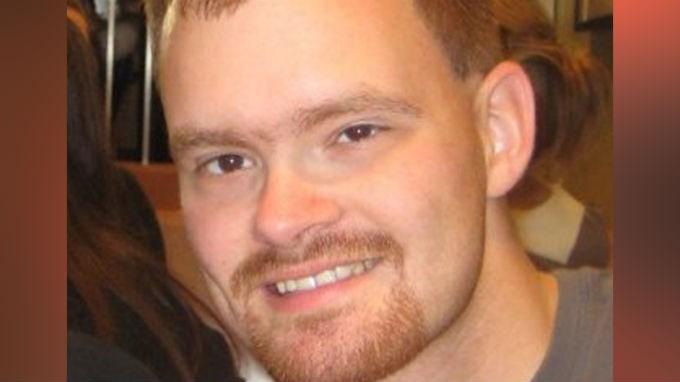Engineer's memory loss delays questioning in deadly Amtrak train wreck

The ride home on Amtrak Train 188 was mundane and relaxing as usual for Duy Nguyen, and he used the time Tuesday evening to call ahead to his wife Amy Dwyer in northern New Jersey on his cell phone.
Then then train, carrying 243 passengers, lurched up over 100 mph, and into a historic wreck in a curve at Philadelphia's Frankford Junction, where it killed eight people, and sent another 200 to the hospital.
The accident has shut down train service in much of the Northeast, triggered an investigation and at least one injury lawsuit. And it reignited a nagging debate about America's decaying infrastructures and railroad safety.
Just before the crash, while speaking with his wife, Nguyen sensed disaster coming. \"The thought crossed my mind to say, 'I think we're going to crash,' but I wasn't able to say it,\" he told CNN's Gary Tuchman.
Then he felt like he was flying.
Derailed, disconnected
He was. So were other passengers, their luggage and laptops. So were whole train cars lifting off the track, shedding masses of steel debris as they tilled through the ground like a crashing meteor.
Ngyuen hit his head, and his cell phone popped out of his hand, but the call was still connected, and his wife could hear a cacophony of yells, crashes and commotion. As she cried out to Nguyen to answer her, he did not.
Dwyer called police, who knew about the crash but nothing about her husband.
Engineer with amnesia?
Meanwhile, at the front of the train, in the locomotive, the man who may know best what caused the crash also injured his head, suffering a concussion, his lawyer said. The engine tumbled over multiple times.
Now Engineer Brandon Bostian has memory loss due to a concussion, his attorney Robert Goggin said.
\"I believe as a result of the concussion, he has absolutely no recollection of the events. I'm told that his memory is likely to return as the concussion symptoms subside,\" he said.
Part of the investigation will focus on Bostian, Robert Sumwalt with the National Transportation Safety Board told CNN's Anderson Cooper on Thursday.
\"Why did that train go from that speed to over 100 mph?\" he'd like to ask Bostian. \"He was doing 106.\" The speed limit in that curve was 50 mph.
Video recording
Sixty-five second before the crash, a video shows the train was hurtling down the tracks at more than 70 mph and continuing to accelerate, National Transportation Safety Board spokesman Robert Sumwalt said. Then the video cuts out, presumably due to the crash.
\"It just shows the speed alone,\" Sumwalt said. \"It doesn't tell how the speed got there.\"
Investigators may need to rely heavily on what Bostian says. Philadelphia police have a warrant for his cell phone records, the Philadelphia Inquirer reported, and may be able to determine if he was distracted.
Cooper: Concussion as excuse?
But the only thing Bostian remembers is coming to in the crashed locomotive, turning on his cell phone and calling 911, Goggin said. Bostian has spoken briefly with investigators, Philadelphia Mayor Michael Nutter said.
He gave them \"a pretty short interview (then) indicated that he didn't want\" to talk more, Nutter said. Investigators will have to wait for Bostian's memory to return to hear more, Sumwalt said.
Could amnesia be an excuse not to say more and risk self-incrimination? Cooper put the question to CNN legal expert Jeffrey Toobin.
He said it was not in Bostian's interest to speak too soon. \"Any criminal lawyer would advise this guy not to talk to the authorities until at least he sees a lot of what else the evidence is.\"
Memory loss feasible
But the traumatic injury could have caused post-traumatic amnesia, said CNN's Sanjay Gupta. A concussion can make victims forget parts of what happened before and after the injury.
\"They describe having islands of memory,\" Gupta said. \"You may recall certain things but not remember other things.\" And that could punch gaps into Bostian's account.
He has been cooperative, Goggin said, and will talk again with investigators \"when they ask.\" But he has already told them \"everything he knew. He cooperated fully.\"
He also voluntarily took a blood test, Goggin said. There was \"no drinking, no drugs, no medical conditions. Nothing,\" he said. And his reputation as an engineer appears to have shined.
Reputation as safety geek
Bostian has had a reputation for being a transportation safety geek since high school, when he wrote articles on rail travel for his school newspaper. Online forum postings attributed to him from 2011 lambast alleged lags in rail safety technology.
After a train wreck that occurred when an engineer was distracted, he apparently lamented the lack of automatic braking technology on the stretch.
\"At any point over the previous EIGHTY years the railroad could have voluntarily implemented some form of this technology on the line where that fateful wreck took place,\" he wrote.
New safety systems
In that way, Bostian is of similar mind to Amtrak's CEO.
\"I would say, had it been installed, it would have prevented this accident,\" said Joseph Boardman of Tuesday's tragedy. He's been pushing to spread accident preventative technology, called positive train control, for years.
Boardman was once a federal railroad administrator. Back then a law passed to get it installed by December 2015. Boardman vowed that he would make that happen on time on the Northeast Corridor section.
Tuesday's crash shut down much of the service in the nation's busiest rail region, but Boardman expects service to be back to normal by Tuesday.
Costs cuts vs. expenditure
President Barack Obama has called for more spending to repair decaying infrastructures in the wake of the crash. On Wednesday, a Republican-led House Appropriations Committee voted to reduce grants to Amtrak by $252 million, a drop of about 15% from last year's level. The cut would not touch funding levels for safety and operations.
An Amtrak employee has filed what is believed to be the first lawsuit against the rail company in the Philadelphia derailment.
Bruce Phillips, a dispatcher, was commuting to New York City, when he suffered brain trauma in the accident, according to his attorney.
But legal claims should not take a too exorbitant financial toll on Amtrak, Toobin said. Laws limit the total amount of damages that can be paid out to $200 million per train accident. In a big crash with many claims, it doesn't amount to very much per injured plaintiff.
Material investigation
Bostian is not alone under the NTSB's magnifying glass. Inspectors will look at much more, Sumwalt said. \"The human, the machine, and the environment.\"
So far, they have found no indication that signals or tracks were defective. \"We have yet to conduct the braking examination of the train,\" he said. They will in the coming days.
Investigators will have a lot of wreckage to sift through. The crash tossed the train's passenger cars on their sides and shredded one like a can, spilling dozens off blue seat cushions into the dirt.
Nguyen's head injured
The night of the crash, rescuers and passengers less severely injured help less fortunate passengers exit the overturned cars.
Nguyen climbed out, then borrowed a cell phone to call his wife. Dwyer asked him what injuries he had. He told her his head was bleeding. Then he had to give the phone back.
She got into her car and drove to Philadelphia, where she found him early Wednesday morning, with stiches in his head. She did not give Nguyen much of a hug.
\"It might have been a little peck on the cheek, because he was in a lot of pain,\" she said. \"I didn't want to make it worse.\" Nguyen was soon released and was recovering at home in New Jersey on Thursday, where he went outside for a stroll with his wife.
TM & © 2015 Cable News Network, Inc., a Time Warner Company. All rights reserved.
